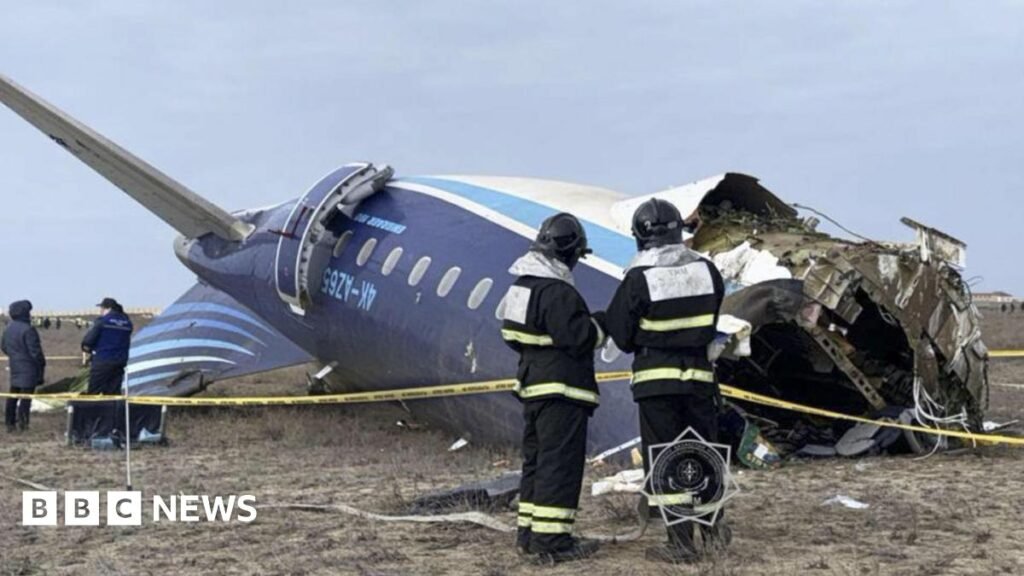As the flight approached Grozny, it entered dense fog, the surviving passengers said.
They describe how the pilot tried to land the plane twice in these conditions.
According to survivors, on the third attempt, they felt a series of explosions hit the plane.
“For the third time, something exploded… part of the plane’s skin came off,” one of them told Russian television.
A flight attendant on the plane, Zulfukar Asadav, told local media that the strike “caused panic inside.”
“We (passengers) tried to calm down and put them down. At that moment there was another blow, my arm was damaged,” he said.
In a video taken by a passenger on the flight, oxygen masks can be seen hanging from the ceiling.
Azerbaijan’s Transport Minister Rashad Nabiyev said: “All without exception (survivors) said they heard three explosions when the plane was over Grozny.”
He said the plane was hit by “external interference” when it tried to land and was damaged internally and externally.
In recent weeks, Ukraine has carried out drone strikes in Chechnya and other parts of the Russian Caucasus.
After the disaster, the authorities in Moscow said that such attacks had prompted a protocol to close the airspace over Grozny.
According to local officials, an anti-aircraft drone was shot down that morning over a shopping center in Vladikavkaz, in neighboring North Ossetia.
It is unclear whether the closed airspace protocol – known as the “carpet plan” – was adopted before or while flight J2-8243 was in Russian airspace.

